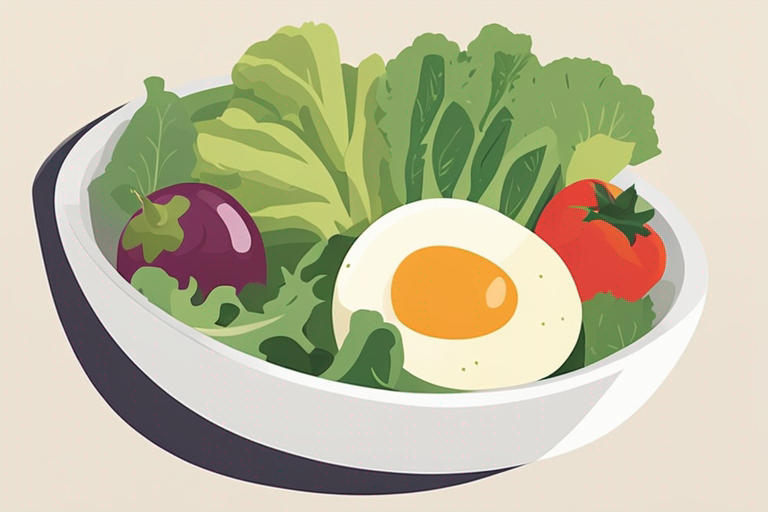
Can You Eat Salad After the Expiration Date: A Comprehensive Guide
Get Your Free Food Safety Cheat Sheet
30 most common foods with instant answers. Print it and stick it on your fridge—completely free!
Can You Eat Salad After the Expiration Date: A Comprehensive Guide
In today's fast-paced world, it's easy to overlook the expiration dates on our food items, including salad greens. But when it comes to food safety, it's crucial to pay attention to these dates to avoid potential health risks. In this comprehensive guide, we'll explore whether it's safe to eat salad after the expiration date and provide practical tips for ensuring your salad stays fresh and safe to consume.
Understanding Expiration Dates on Salad Packaging
When you purchase a bag or container of salad greens from the store, you'll typically find an expiration date printed on the packaging. This date indicates the last day that the product is guaranteed to be at its peak freshness and quality. It's important to note that expiration dates are set by manufacturers based on factors such as the product's shelf life and potential for microbial growth.
Types of Expiration Dates on Salad Packaging
-
"Use-By" Date: This date is recommended by the manufacturer for the best quality of the product. It's typically found on perishable items like salad greens and indicates when the product is expected to be at its freshest.
-
"Sell-By" Date: This date is provided to retailers as a guideline for how long they should display the product for sale. It's not necessarily an indication of the product's safety but rather its freshness.
Can You Eat Salad After the Expiration Date?
While it's always best to consume salad greens before the expiration date for optimal freshness and taste, eating them after the date has passed may still be safe under certain conditions. Here are some factors to consider:
Factors to Consider Before Eating Expired Salad
-
Visual Inspection: Check the salad greens for any signs of spoilage, such as wilting, discoloration, or the presence of mold.
-
Smell Test: If the salad emits an off-putting or sour odor, it's best to discard it.
-
Taste: If the salad tastes bitter or has an unusual flavor, it's advisable not to consume it.
-
Storage Conditions: Properly storing the salad in the refrigerator at the correct temperature can help extend its shelf life.
Tips for Safely Consuming Salad Past the Expiration Date
If you've determined that your salad greens are still safe to eat after the expiration date, follow these tips to ensure their safety:
-
Thoroughly Wash the Greens: Rinse the salad greens under cold water to remove any dirt, bacteria, or contaminants.
-
Use a Salad Spinner: Pat the greens dry with a clean kitchen towel or use a salad spinner to remove excess moisture, which can promote bacterial growth.
-
Avoid Cross-Contamination: Use clean utensils and cutting boards when preparing your salad to prevent cross-contamination with harmful bacteria.
-
Store Properly: Keep the salad refrigerated at or below 40°F (4°C) to slow down the growth of bacteria and maintain freshness.
Conclusion
In conclusion, while it's best to consume salad greens before the expiration date for optimal quality, eating them after the date has passed may still be safe as long as they show no signs of spoilage. By following proper food safety practices, such as thorough washing, careful storage, and mindful inspection, you can enjoy your salad past the expiration date without compromising your health. Remember to trust your senses and use caution when consuming expired foods to minimize the risk of foodborne illness. Stay informed, stay safe, and enjoy your greens responsibly!

Authoritative Food Safety References
These agencies and university labs inform every tip and health precaution we publish.
USDA FoodKeeper – Cold Storage Guidelines
Official refrigerator, freezer, and pantry timelines maintained by the U.S. Department of Agriculture.
Visit USDA FoodKeeperFDA Produce Safety Rule & Grower Guidance
Field-to-fridge handling practices that prevent contamination of fruits, vegetables, and leafy greens.
Visit FDA Produce SafetyCDC Foodborne Illness Prevention Hub
Surveillance-backed guidance on pathogens, symptoms, and steps to reduce foodborne illness risk.
Visit CDC Food SafetyUC Davis Postharvest Technology Center
University research detailing optimal storage atmospheres for produce after harvest.
Visit UC Davis PostharvestPenn State Extension – Home Food Preservation & Safety
Peer-reviewed extension bulletins on safe canning, chilling, and reheating practices.
Visit Penn State ExtensionCan you eat salad after the expiration date?
How long can you keep salad in the fridge?
What are the signs that salad has gone bad?
Can you freeze salad to prolong its shelf life?
How can I safely store salad to prevent it from spoiling quickly?
Get Your Free Food Safety Cheat Sheet
30 most common foods with instant answers. Print it and stick it on your fridge—completely free! Want more? Upgrade to the complete guide with 70+ foods.
Scan your food directly and get instant safety info using our AI-powered camera feature.